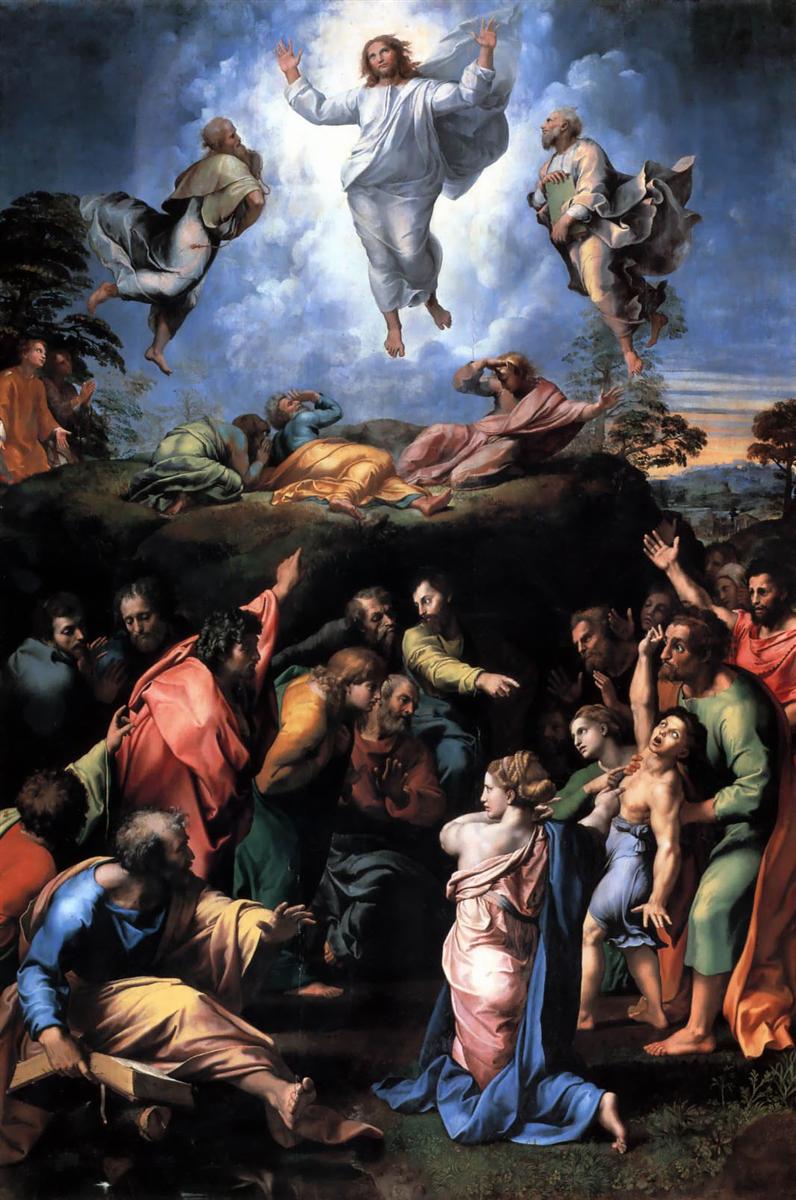The Transfiguration
Story
Cardinal Giulio de' Medici commissioned the Transfiguration in 1517 to Raphael for the French Cathedral of Narbonne. Bad health prevented Raphael from finishing it. The painting, however, remained in Rome in San Pietro in Montorio after 1523. Taken to Paris 1797, it was brought back in its present location in 1815.
The composition of the Transfiguration is divided into two distinct parts: the Miracle of the Possessed Boy on a lower level; and the Transfiguration of Christ on Mount Tabor, in the background. The transfigured Christ floats in an aura of light and clouds above the hill, accompanied by Moses and Elijah. Below, on the ground, are his disciples. Some are dazzled by the light of glory, others are in prayer. The gestures of the crowd beholding at the miracle link the two parts together: the raised hands of the crowd converge toward the figure of Christ. In this very grand composition Raphael has summed up all the elements present in the best of contemporary painting, including references to classical antiquity, Leonardo da Vinci (without doubt based on his recall of impressions garnered during his stay in Florence) and - not without a certain narcissism - himself. The works set the stage (just as surely as Michelangelo's Doni Tondo) for Mannerism.
The numerous drawings (both by Raphael and pupils) for the characters in the painting, together with the number of variants of the first draft which were revealed by restoration work in 1977, show just exactly how carefully meditated a composition it is. The restoration also dispelled any doubts as to the authenticity of the attribution to Raphael; the retouching and corrections are proof that the painting (although unfinished) is actually entirely in his hand.
The Transfiguration is the last bequest of an artist whose brief life was rich in inspiration, where doubt or tension had no place. Raphael's life was spent in thoughts of great harmony and balance. This is one of the reasons why Raphael appears as the best interpreter of the art of his time and has been admired and studied in every century.
